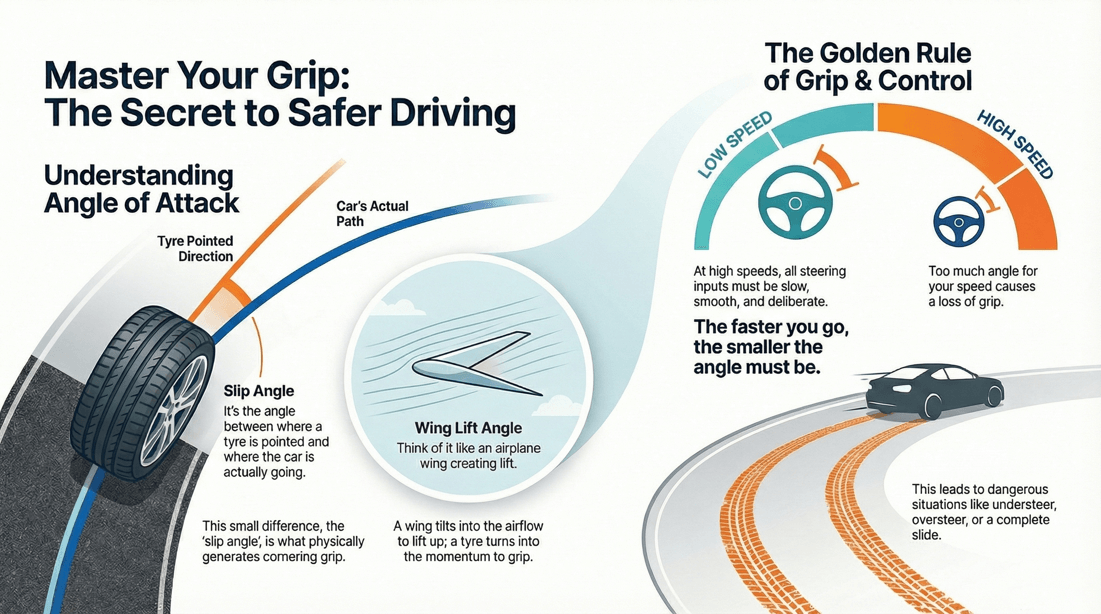Angle of Attack (Slip Angle)
⫸ Free YouTube Subscription
Every turn your vehicle makes tells a story about balance, grip, and control. The secret behind smooth handling and safe cornering often lies in a simple but powerful concept—angle of attack. Whether gliding through a tight bend or adjusting direction on a highway, the way your wheels align with the path ahead can mean the difference between confidence and chaos behind the wheel.
What is angle of attack in a car and why does it matter for safe driving? How does the angle at which you steer into a curve affect your vehicle's traction? What happens when your angle of approach is too sharp or misaligned? How can understanding angle of attack help you avoid understeer or oversteer? What role does this concept play during emergency maneuvers or sudden changes in direction?
This page explains how angle of attack influences your vehicle’s dynamics by comparing it to an airplane wing lifting off the runway. Just as lift depends on the wing's pitch against the oncoming airflow, vehicle stability depends on how your wheels are angled relative to your direction of travel. By grasping this concept, drivers can better understand the forces acting on their car during turns and lane changes. This knowledge empowers you to approach curves more safely, correct your steering with precision, and maintain control under pressure.
Angle of Attack is the angle of an object relative to the direction that it is going in.
Take the airplane wing in the accompanying picture. When an aircraft is speeding down the runway before taking off, there is zero (or very little) angle of the wings relative to the direction of the airflow passing over it.
As soon as the aircraft is going to take off, the nose pitches up and the angle of the wings relative to the airflow starts to increase, up to the point that the aircraft lifts off and then the angle of the airflow narrows until it is once again in direct line with the direction of the wing.
It is this period where that angle is greater than zero that we are interested in because the same applies to land vehicles where the angle of the wheel changes relative to the direction that the vehicle is traveling in.
The higher the speed of the vehicle:
When the angle of attack is too great for the speed of the vehicle, then the risk arises of inducing a slide or flipping the vehicle.
⧋
🡄 Previous Page Next Page 🡆



